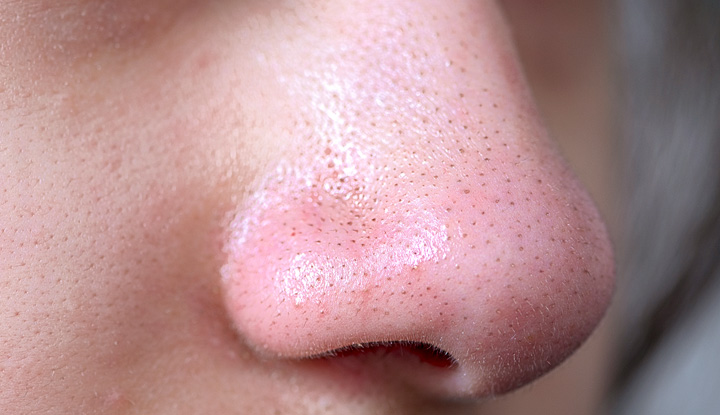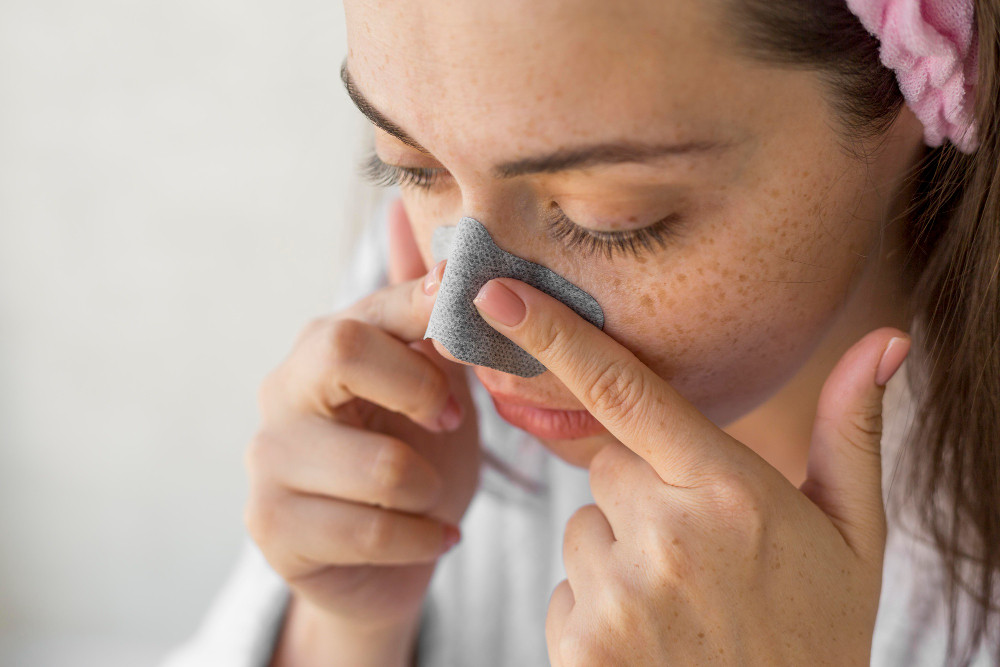We’ve all seen them – those tiny dots across your face, especially around the nose, cheeks, chin, and forehead. At first glance, they might look like blackheads, but there’s actually much more to these small marks than meets the eye. In fact, these filaments are a natural part of your skin, and understanding them could be the key to maintaining healthy, glowing skin. Let’s dive into what sebaceous filaments are, why they appear on your face, and how to take care of them.
What Exactly Are Sebaceous Filaments?

So, what exactly are these mysterious dots on your face? Well, sebaceous filaments are tiny, tube-like structures within your pores. Their primary function is to help transport sebum (natural oil) from your sebaceous glands to the surface of your skin. This process helps keep your skin hydrated and acts as a protective barrier. They’re not clogged pores or blackheads, though they may look similar.
What’s the Difference Between Sebaceous Filaments and Blackheads?
You might be wondering, “Are these sebaceous filaments the same as blackheads?” The answer is no. While both look like dark spots, they serve different purposes. Blackheads are caused by clogged pores, typically filled with oil and bacteria. Sebaceous filaments, on the other hand, are simply oil and keratin. They’re natural and not harmful.
Dr. Dendy Engelman, a board-certified dermatologist, explains that sebaceous filaments are a normal part of the skin’s structure, whereas blackheads are signs of clogged pores that may require treatment. The presence of sebaceous filaments doesn’t indicate a skincare problem, but blackheads can signal the need for a better skincare regimen.
Who Gets Sebaceous Filaments?
In short, everyone has sebaceous filaments. They’re completely normal and are present in everyone’s skin, although they may be more noticeable on certain individuals. Genetics and age play a significant role in how visible these filaments are. For example, people with thicker hair follicles may find their sebaceous filaments more visible.
Video : How To Get Rid Of Sebaceous Filaments
Why Are They More Noticeable as You Age?
As we age, our skin changes. The glands responsible for producing oil may enlarge, making sebaceous filaments more prominent. This is especially true for people who experience an increase in oil production during puberty. Additionally, as skin sags and loosens with age, pores can enlarge, which in turn makes the filaments appear larger.
Should You Remove Sebaceous Filaments?
You’ve likely seen viral videos where people pull out their sebaceous filaments or try to scrub them away. But should you try this at home? Dermatologists advise against it. Here’s why:
- Natural Function: Sebaceous filaments are vital for maintaining your skin’s hydration and softness. Squeezing or trying to remove them may disrupt this natural process.
- Temporary Results: Even if you manage to remove the filaments temporarily, they will return once the follicle fills up with sebum again—usually within a month.
- Skin Damage: Squeezing or pinching your skin can cause trauma to the outer layers, leading to redness, inflammation, scarring, and even infections.
So, before you try to DIY-remove sebaceous filaments, think about their importance for your skin and the potential consequences of trying to eliminate them.
The Trend of “Skin Gritting”: Is It Effective?
Recently, some beauty influencers have been promoting the trend of “skin gritting” as a way to eliminate sebaceous filaments. The process involves layering products like oil cleansers, exfoliants, clay masks, and then massaging the skin for up to 15 minutes. While this might sound tempting, dermatologists caution against it.
Dr. Engelman explains that while this combination of products might give your skin a deep cleanse, much of the so-called “grit” you feel is just the excess product left behind on your skin. Additionally, using such abrasive methods can make your skin look looser over time, and may even enlarge your pores.

What’s the Takeaway?
While the idea of “skin gritting” may seem intriguing, it’s essential to focus on creating a skincare routine that promotes healthy, glowing skin rather than attempting extreme methods. Too much exfoliation or excessive product buildup can do more harm than good.
How to Care for Sebaceous Filaments
While sebaceous filaments are a natural part of your skin, there are still ways you can manage them. Here are a few tips for reducing their appearance and keeping your skin looking fresh:
1. Use Gentle Cleansers
The key to managing sebaceous filaments is to maintain a balanced skincare routine. Harsh cleansers can strip your skin of its natural oils, causing your sebaceous glands to overproduce oil to compensate. Instead, opt for gentle cleansers that don’t dry out your skin.
2. Incorporate Alpha Hydroxy Acids (AHAs)
AHAs, like glycolic acid, help exfoliate the skin and remove dead skin cells that may clog your pores. Regular use can help minimize the appearance of sebaceous filaments without causing harm to your skin’s natural balance.
3. Use Oil-Absorbing Clay Masks
Clay masks, particularly those with ingredients like bentonite or kaolin, can absorb excess oil and reduce the visibility of sebaceous filaments. Use a mask once a week to give your skin a deep cleanse.
4. Include Retinol in Your Skincare
Retinol is a powerful ingredient that encourages cell turnover and can help shrink the size of your pores over time. It helps your skin maintain a smooth appearance by preventing the buildup of excess oil in your pores.
5. Moisturize Regularly
Even if you have oily skin, moisturizing is essential. It helps maintain your skin’s hydration levels and can prevent the overproduction of sebum, which may make sebaceous filaments more noticeable.
Video : Double Cleansing: Everything You Need To Know
Why You Should Embrace Your Skin’s Natural Texture
It’s important to remember that no skin is completely smooth or flawless—this is a common misconception, fueled by filters and airbrushed photos. Sebaceous filaments are a normal part of skin structure and serve a vital purpose: they keep your skin hydrated and healthy. Rather than striving for perfectly smooth skin, focus on maintaining healthy skin that functions optimally.
By understanding sebaceous filaments and their role in your skin’s health, you can stop worrying about achieving an unrealistic standard of “perfect” skin and embrace your natural texture.
Conclusion: Keep Your Skin Healthy, Not Perfect
Sebaceous filaments are an essential part of skin health, even though they may appear unsightly at times. Instead of obsessing over removing them, focus on taking care of your skin with a balanced routine. Embrace your skin’s natural texture, and remember that perfection is not the goal—health is.
If you’re concerned about your skin or the appearance of sebaceous filaments, always consult with a dermatologist to develop a personalized skincare routine. With the right care, you’ll have beautiful, healthy skin that works for you!


